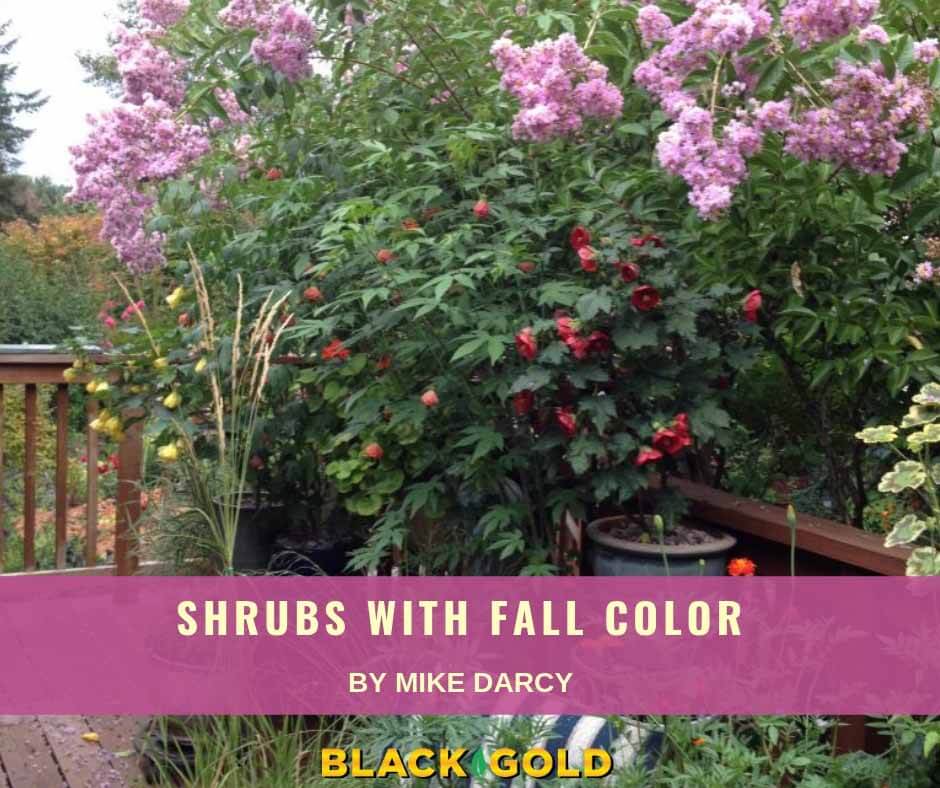
In the spring, gardens come alive with tulips and other spring-flowering bulbs, and the peonies and many other herbaceous perennials emerge from the soil. It is a time of much 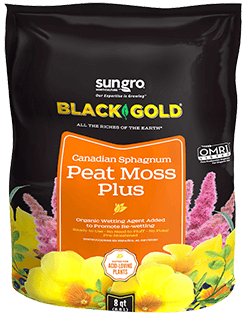 anticipation for gardeners. We often visit our local garden centers to see what is new, in bloom, and what we must have. In the fall season, however, gardeners are less apt to visit garden centers or other gardens. As a result, many late-blooming trees and shrubs are overlooked when there are so many trees and shrubs with fall color to consider.
anticipation for gardeners. We often visit our local garden centers to see what is new, in bloom, and what we must have. In the fall season, however, gardeners are less apt to visit garden centers or other gardens. As a result, many late-blooming trees and shrubs are overlooked when there are so many trees and shrubs with fall color to consider.
I began to seek out trees and shrubs that provide good fall color some time ago. Whether the color comes from flowers, berries, bark, or foliage, there is a surprising assortment to chose from. My plants of choice were selected for Pacific Northwest gardeners, but they can also be cultivated in other parts of the country.
Hydrangea
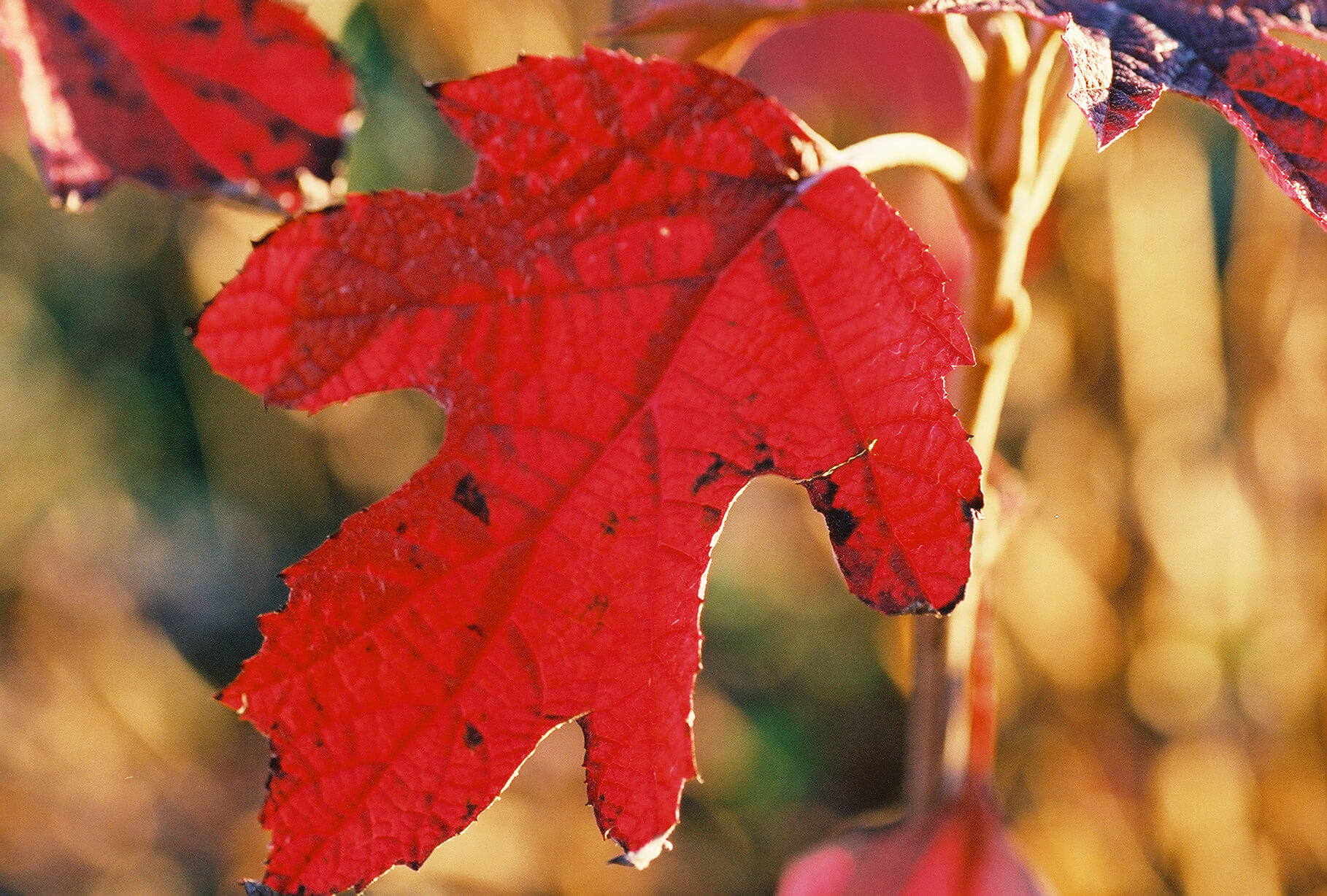
While hydrangeas are noted for their spectacular flowers in late spring and summer, some varieties provide great fall color. One is Hydrangea paniculata ‘Fire and Ice’. The cream-colored spring flowers change to pink as the season progresses, and by the end of summer the papery blooms turn dark to medium pink.
Oakleaf hydrangeas (Hydrangea quercifolia) put on a great fall show with both colorful flowers and foliage. Not only do their pinkish-tan flowers remain attractive into winter, but their leaves turn brilliant shades of red. ‘Snow Queen’ is a large, carefree oakleaf hydrangea with rich mahogany red fall leaves and very large flowers.
Hydrangeas grow best in humus-rich, moderately moist soil. Before planting amend with Black Gold Peat Moss Plus. It contains an organic wetting agent and helps hold soil moisture during the hot days of summer.
Crape Myrtle
There are so many selections of crape myrtle (Lagerstroemia indica) that it can be difficult to make a decision if one only has space for a single plant. Older varieties were traditionally late blooming and prone to powdery mildew here in the Pacific Northwest, but most new selections are resistant to powdery mildew and will flower from July to September. An added bonus is that crape myrtles bloom on new growth, so they can be pruned to size in winter or spring if space is a consideration. The flower colors range from white to lavender to shades of pink and red. Some varieties even have red, bronze, or dark purple foliage, which can provide a nice contrast against a home or large border.
Peanut Butter Shrub
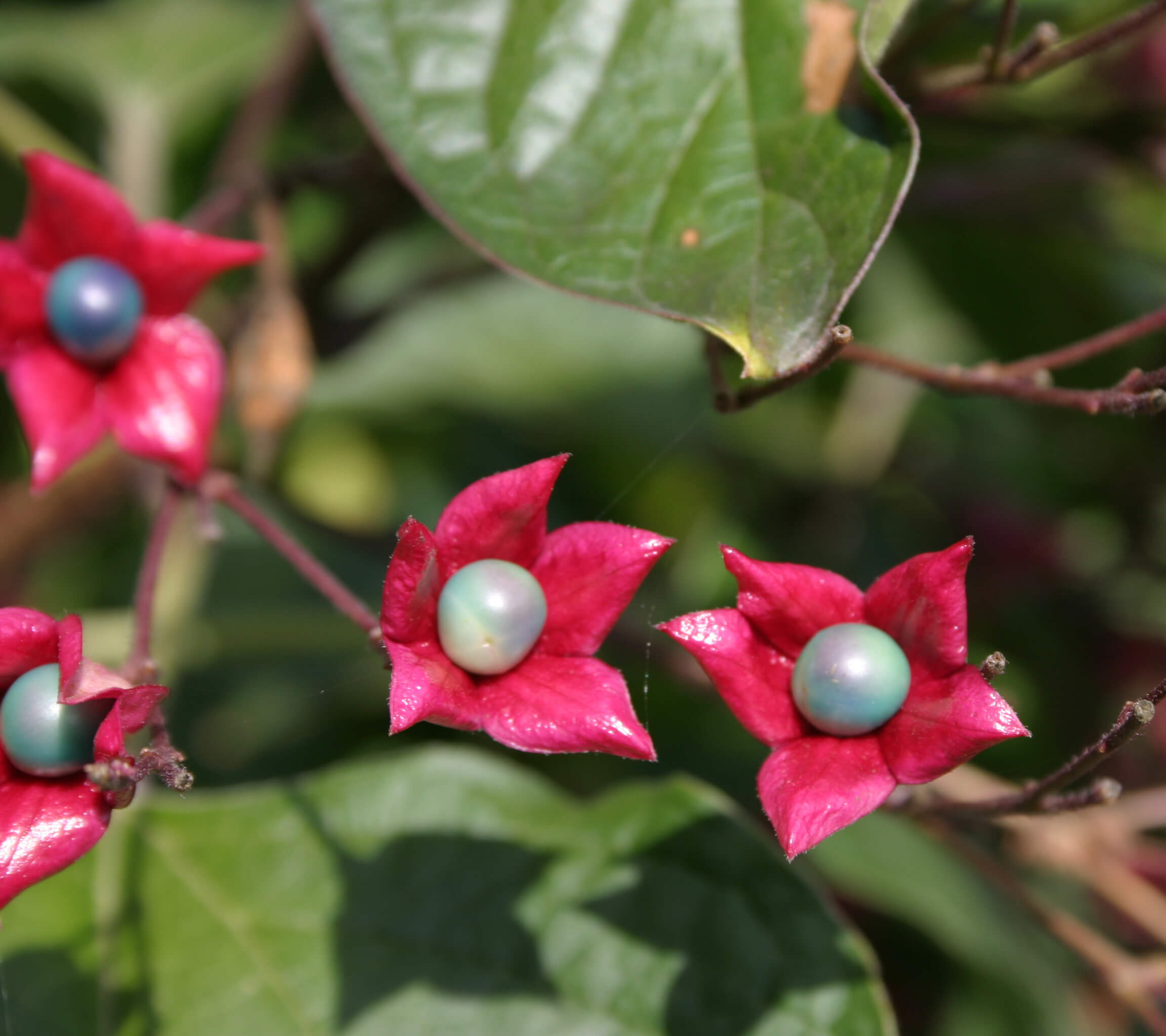
Clerodendron trichotomum, often referred to as the “peanut butter shrub” due to its leaf and stem fragrance, is a mid- to late-summer bloomer that produces brilliant clusters of fall fruits. Each fruit has four fuchsia calyces that surround a metallic turquoise drupe. The showy fruits remain on the tree into the early fall.
European Spindle Tree
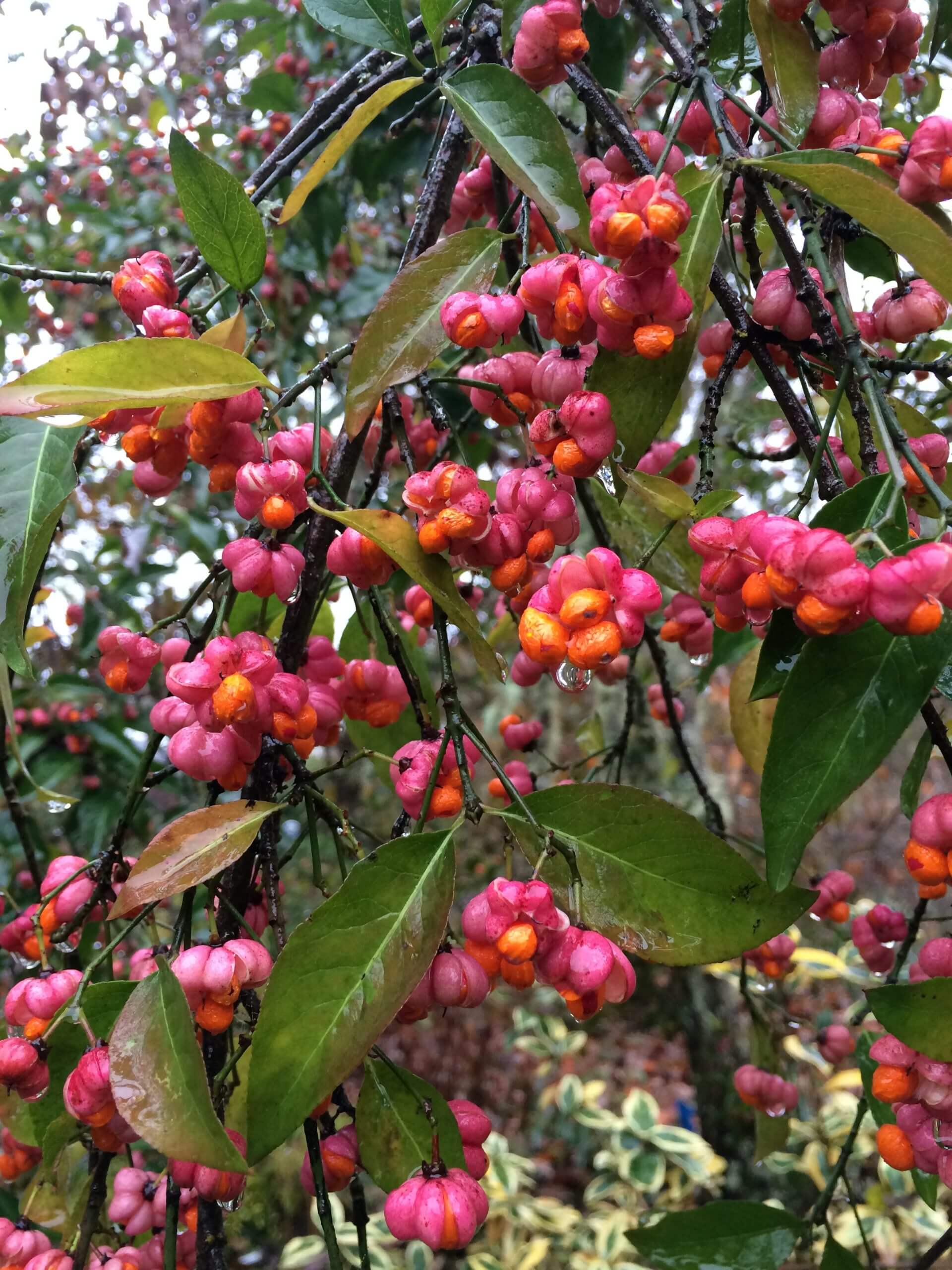
Euonymus europaeus ‘Aldenhamensis’, (European spindle tree) produces a comparable display of brilliant fruits. In spring, rather nondescript clusters of small white flowers appear. In fall, fruits appear that are brilliant pink outside and open to show orange berries. If that is not enough, the leaves turn brilliant fuchsia before dropping.
There is much to be seen in the garden at this time of year. Not only are summer annuals still going strong and dahlias at their prime, but many trees and shrubs are putting on quite a show that should not be missed. It is a good time to visit your local garden center to discover these and other fall-blooming trees and shrubs for autumn. (Click here to discover more fabulous fall-blooming shrubs.)

